15 years one-stop China custom CNC machining parts factory
 127 |
Published by VMT at Jul 23 2025 | Reading Time:About 6 minutes
127 |
Published by VMT at Jul 23 2025 | Reading Time:About 6 minutes
Choosing the right stainless steel for CNC machining can be overwhelming, especially when comparing popular alloys like 17/4 PH and 304. Manufacturers, engineers, and buyers often struggle to balance strength, corrosion resistance, cost, and machinability—yet each project demands precise material performance. The wrong decision can lead to part failure, higher costs, or even product recalls.
Fortunately, understanding the differences between 17/4 PH stainless steel and 304 stainless steel will help you select the best alloy for your needs. Whether you need high-strength components or general-purpose corrosion resistance, this guide will give you all the essential information—backed by detailed property comparisons and practical machining insights.
17/4 PH stainless steel is a precipitation-hardened alloy offering superior strength and moderate corrosion resistance, while 304 stainless steel provides excellent corrosion resistance and weldability but lower strength. The choice depends on application demands—use 17/4 PH for high-load, precision parts; choose 304 for cost-effective, corrosion-resistant components.
Now that you know the basic distinction between 17/4 PH and 304 stainless steel, it’s time to explore how each alloy performs in real-world applications. From mechanical and physical properties to CNC machining considerations, the following sections will break down the key characteristics, advantages, and drawbacks of each material—helping you confidently choose the right stainless steel for your next project.
Key Points: What Is the Difference Between 17/4 PH Stainless Steel and 304 Stainless Steel?
17/4 PH stainless steel contains chromium, nickel, and copper, with added niobium for precipitation hardening. It delivers higher strength and hardness compared to 304 stainless steel, which has a simpler composition with high chromium and nickel content for excellent corrosion resistance.
17/4 PH offers superior tensile strength, yield strength, and hardness, making it ideal for high-stress components in aerospace and precision engineering. 304 stainless steel is more ductile and easier to form but cannot match 17/4 PH in load-bearing or wear resistance.
304 stainless steel performs better in environments requiring resistance to acids and chlorides. 17/4 PH has moderate corrosion resistance, suitable for general industrial conditions but not aggressive chemical exposures.
304 is easier to weld and machine without requiring post-heat treatment. 17/4 PH requires careful heat treatment (e.g., H900-H1150) to achieve optimal mechanical properties and is more difficult to weld.
Choose 17/4 PH stainless steel CNC machining parts for applications requiring high strength and dimensional stability, such as aircraft fittings, shafts, and nuclear components. Select 304 stainless steel CNC machining parts for sinks, fasteners, architectural panels, and food-grade equipment.
304 stainless steel is cheaper and more widely available. 17/4 PH, while more expensive, justifies its cost in strength-critical, high-performance parts.
For CNC machining services, choose 17/4 PH stainless steel when strength and hardness are critical. Choose 304 stainless steel when corrosion resistance, cost, and formability are more important.
17/4 PH stainless steel, also known as 17-4 precipitation hardening stainless steel or UNS S17400, is a martensitic stainless steel that gains its strength through a process called precipitation hardening. The “17/4” designation refers to its nominal chemical composition—approximately 17% chromium and 4% nickel, with added copper and niobium to support the hardening mechanism.
This alloy is valued for its exceptional combination of high strength, moderate corrosion resistance, and good mechanical properties at temperatures up to 600°F (316°C). It is one of the most widely used stainless steels in the aerospace, chemical, energy, and precision machining industries, particularly in the manufacture of high-performance CNC machining parts.
A defining feature of 17/4 PH stainless steel is its ability to be heat treated to various hardness and strength levels—typically designated as H900, H1025, H1075, H1150, etc. This flexibility allows engineers and CNC machining factories to fine-tune the material's performance characteristics according to application needs. For example, H900 offers maximum hardness and strength, while H1150 increases toughness and corrosion resistance.
In the CNC machining industry, 17/4 PH stainless steel CNC machining parts are preferred in components like turbine blades, structural aerospace brackets, shafts, and high-stress mechanical parts. However, due to its martensitic structure and precipitation-hardening treatment, it requires careful machining practices, including proper tooling, cooling, and post-processing.
Overall, 17/4 PH stainless steel provides an excellent balance between mechanical strength and corrosion resistance, making it an ideal material for parts that demand both durability and dimensional stability in demanding environments.
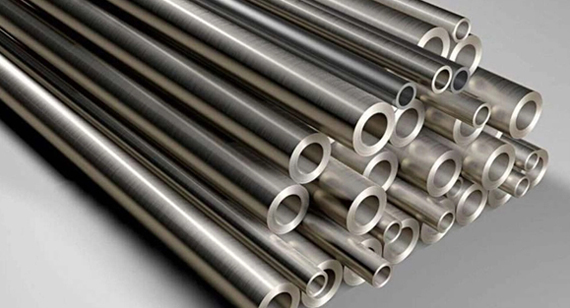
304 stainless steel, also known as AISI 304 or UNS S30400, is the most widely used austenitic stainless steel. It is primarily composed of 18% chromium and 8% nickel, which is why it is also commonly referred to as 18/8 stainless steel. Its popularity stems from its excellent combination of corrosion resistance, formability, and overall affordability, making it a versatile material across numerous industries.
As an austenitic alloy, 304 stainless steel is non-magnetic in its annealed state and offers outstanding resistance to oxidation and a wide range of atmospheric and chemical environments. It performs well in environments exposed to water, mild acids, and food-grade applications, which makes it a preferred choice for products such as kitchen equipment, piping, tanks, and architectural trim.
In the CNC machining sector, 304 stainless steel CNC machining parts are common in components that require moderate mechanical strength, superior corrosion resistance, and good surface finish. Due to its relatively soft structure compared to hardened martensitic steels like 17/4 PH, it is easier to machine, weld, and form—but it is not heat-treatable to increase hardness.
One notable limitation of 304 stainless steel is its lower strength and wear resistance compared to precipitation-hardened steels. It also lacks the ability to maintain high strength at elevated temperatures. However, it compensates for these with excellent ductility and toughness, even at low temperatures.
Thanks to its balance of cost, corrosion resistance, and machinability, 304 stainless steel remains a core material in stainless steel CNC machining and is widely available in CNC machining factories around the world.
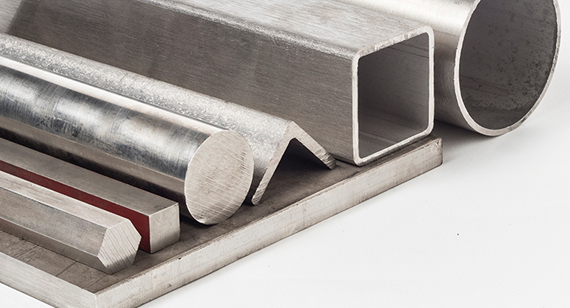
Although both 17/4 PH stainless steel and 304 stainless steel belong to the broader family of stainless steels, their chemical makeup, mechanical properties, and performance characteristics differ significantly, leading to very different applications and machining considerations. Understanding these distinctions is essential for selecting the appropriate material for CNC machining projects.
The primary difference lies in their microstructure and hardening mechanisms. 17/4 PH is a precipitation-hardened martensitic stainless steel, meaning it gains strength and hardness through heat treatment. In contrast, 304 is an austenitic stainless steel, which is non-magnetic and not hardenable by heat treatment. This key difference makes 17/4 PH more suitable for applications that require high strength, rigidity, and wear resistance, whereas 304 is ideal for corrosion resistance, ductility, and formability.
In terms of mechanical properties, 17/4 PH stainless steel exhibits significantly higher tensile strength, yield strength, and hardness, making it well-suited for high-stress components in aerospace, defense, and mechanical systems. On the other hand, 304 stainless steel, while not as strong, offers superior corrosion resistance in most atmospheric and chemical environments, especially those involving food processing or marine exposure.
Another notable difference is machinability. While both materials are machinable with CNC equipment, 17/4 PH stainless steel CNC machining parts may present more challenges due to its hardness, especially in the H900–H1150 heat-treated conditions. 304 stainless steel is generally easier to machine but requires sharp tools and slower feed rates to minimize work hardening.
Cost and availability are also factors. 304 stainless steel is more economical and widely available, making it a go-to material for general-purpose components. 17/4 PH stainless steel tends to be more expensive due to its specialized nature and heat treatment requirements.
In summary, 304 stainless steel is ideal for applications prioritizing corrosion resistance and formability, while 17/4 PH stainless steel is the material of choice for high-strength, load-bearing components where toughness and hardness are critical. CNC machining factories must consider these core differences when choosing materials for optimal performance and cost-effectiveness.
Here is the comparison table summarizing the main differences between 17/4 PH stainless steel and 304 stainless steel:
| Property |
17/4 PH Stainless Steel |
304 Stainless Steel |
| Type |
Martensitic, precipitation-hardening | Austenitic |
| Hardenability |
Yes, via heat treatment (H900–H1150) | No, only via cold working |
| Tensile/Yield Strength |
High | Moderate |
| Corrosion Resistance |
Good, but less than 304 in chloride environments | Excellent in many environments including marine |
| Magnetism |
Magnetic | Non-magnetic (in annealed state) |
| Machinability |
Moderate (improves after heat treatment) | Fair (work-hardens quickly) |
| Weldability |
Weldable (requires post-weld heat treatment) | Excellent weldability |
| Cost |
Higher (due to alloying and treatment) | Lower (more economical and available) |
| Common Applications |
Aerospace, nuclear, high-stress parts, CNC machining components | Food processing, kitchenware, medical devices, general use |
When selecting a stainless steel for CNC machining parts or industrial applications, both 17/4 PH stainless steel and 304 stainless steel offer unique advantages and limitations. Understanding these strengths and weaknesses helps engineers, designers, and procurement specialists choose the best material based on strength, corrosion resistance, cost, machinability, and application-specific needs.
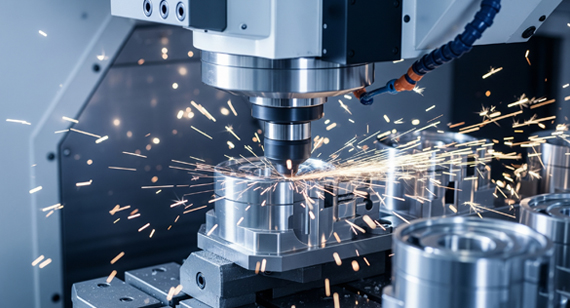
17/4 PH Stainless Steel: Advantages and Disadvantages
17/4 PH stainless steel is a martensitic, precipitation-hardening alloy that combines high strength with good corrosion resistance and moderate machinability. It is often used in aerospace, nuclear, and high-performance mechanical components.
Advantages of 17/4 PH Stainless Steel
Disadvantages of 17/4 PH Stainless Steel
304 Stainless Steel: Advantages and Disadvantages
304 stainless steel is an austenitic alloy and one of the most commonly used stainless steels in the world. Its excellent corrosion resistance, ease of fabrication, and cost-effectiveness make it a standard material for a wide range of CNC machining applications.
Advantages of 304 Stainless Steel
Disadvantages of 304 Stainless Steel
Here is a comparison table showing the advantages and disadvantages of 17/4 PH stainless steel and 304 stainless steel for CNC machining and industrial applications:
| Category |
17/4 PH Stainless Steel |
304 Stainless Steel |
| Strength |
Very high strength and hardness after heat treatment | Moderate strength and hardness |
| Corrosion Resistance |
Good, but less than 304 in chloride-rich environments | Excellent in most environments |
| Heat Treatability |
Yes – precipitation hardening (H900–H1150) | No – cannot be hardened by heat treatment |
| Machinability |
Moderate, improves after aging | Good, but work-hardens quickly |
| Weldability |
Limited – requires post-weld heat treatment | Excellent – easy to weld without special precautions |
| Magnetism |
Magnetic | Non-magnetic (in annealed condition) |
| Cost |
Higher than 304 | More economical |
| Availability |
Less common, used for specialized applications | Very common, readily available |
| Applications |
Aerospace, nuclear, valves, shafts, structural components | Food processing, medical, kitchenware, architecture |
| CNC Machining Suitability |
Excellent for high-strength parts, requires heat control | Excellent for general-use CNC machining parts |
17-4 PH and 304 stainless steel are two widely used stainless steel grades—one is precipitation-hardened (17-4 PH), and the other is an austenitic grade (304). Each has distinct advantages: 304 is ideal for applications requiring good corrosion resistance at a lower cost, while 17-4 PH excels in high strength and mechanical performance, making it common in aerospace, energy, and precision machinery industries.
Chemical Composition Comparison Table
|
Element |
17-4 PH (% by weight) |
304 Stainless Steel (% by weight) |
| Carbon (C) |
≤ 0.07 | ≤ 0.08 |
| Chromium (Cr) |
15.0 – 17.5 | 18.0 – 20.0 |
| Copper (Cu) |
3.0 – 5.0 | 0.0 |
| Iron (Fe) |
Balance | Balance |
| Manganese (Mn) |
≤ 1.0 | ≤ 2.0 |
| Nickel (Ni) |
3.0 – 5.0 | 8.0 – 10.5 |
| Niobium (Nb) + Tantalum (Ta) |
0.15 – 0.45 | Not added |
| Nitrogen (N) |
Not specified | ≤ 0.10 |
| Phosphorus (P) |
≤ 0.04 | ≤ 0.045 |
| Silicon (Si) |
≤ 1.0 | ≤ 1.0 |
| Sulfur (S) |
≤ 0.03 | ≤ 0.03 |
Key Differences:
Weldability & Machinability: 304 is easier to weld and machine; 17-4 PH requires post-weld heat treatment to restore its properties.
17-4 PH stainless steel is a precipitation-hardened martensitic grade known for its high strength and hardness, while 304 is an austenitic stainless steel offering excellent corrosion resistance and ductility, widely used for general-purpose applications.
Below is a side-by-side table comparing their mechanical properties under standard conditions:
Mechanical Properties Comparison Table
| Property |
17-4 PH Stainless Steel |
304 Stainless Steel |
| Hardness (HRC) |
28 – 44 (after heat treatment) | ≤ 20 (annealed) |
| Hardness (HV) |
~370 – 430 HV (depending on condition) | ~140 – 190 HV |
| Hardness (HRB/HRC) |
~95 HRB / Up to 44 HRC | ~90 HRB / ~20 HRC |
| Tensile Strength (MPa) |
930 – 1180 MPa (H900 condition) | ~515 – 750 MPa |
| Yield Strength (Rp0.2/MPa) |
725 – 1070 MPa (depending on heat treatment) | ~205 – 250 MPa |
| Elongation (%) |
10 – 20% | ~40 – 60% |
| Ductility |
Moderate | High |
| Reduction of Area (Z/%) |
~45 – 60% | ~60 – 75% |
| Elastic Modulus (GPa) |
~200 GPa | ~193 GPa |
| Elongation at Break (%) |
10 – 20% | ~60% |
| Fatigue Strength (MPa) |
~480 – 620 MPa | ~240 – 310 MPa |
| Poisson’s Ratio |
~0.29 | ~0.30 |
| Shear Modulus (GPa) |
~77 – 80 GPa | ~77 GPa |
| Shear Strength (MPa) |
~580 – 700 MPa | ~300 – 450 MPa |
| Heat Treatment Temp (Aging) |
480°C to 620°C (H900 to H1150 conditions) | Not heat-treated (cold worked only) |
Summary of Use Cases:
Both 17-4 PH and 304 stainless steel are popular stainless steel grades, but they differ significantly in their thermal, electrical, and magnetic behavior. These differences influence their use in precision machining, aerospace, medical, and industrial environments.
Physical Properties Comparison Table
| Property |
17-4 PH Stainless Steel |
304 Stainless Steel |
| Density (g/cm³) |
7.75 – 7.80 | 7.90 |
| Melting Point (°C) |
~1400 – 1440°C | ~1390 – 1450°C |
| Specific Heat Capacity (J/kg·K) |
~500 | ~500 |
| Thermal Conductivity (W/m·K) |
~17.0 at 100°C | ~16.2 at 100°C |
| Thermal Expansion (20–100°C) |
10.8 × 10⁻⁶ /K | 17.2 × 10⁻⁶ /K |
| Linear Thermal Expansion Coefficient (10⁻⁶/K) |
~10.8 (20–100°C) | ~17.2 (20–100°C) |
| Electrical Resistivity (μΩ·m) |
~0.90 – 1.00 | ~0.73 |
| Elastic Modulus (kN/mm² or GPa) |
~200 kN/mm² (200 GPa) | ~193 kN/mm² (193 GPa) |
| Magnetic Properties |
Magnetic (ferritic-martensitic, especially after aging) | Non-magnetic in annealed condition (austenitic) |
| Electrical Conductivity (% IACS) |
~2 – 3% IACS (very low) | ~2.5 – 3% IACS (very low) |
Summary: Key Physical Property Insights
| Factor |
17-4 PH Stainless Steel |
304 Stainless Steel |
| Dimensional Stability |
Excellent due to low thermal expansion; ideal for tight-tolerance parts | More thermal expansion can cause distortion in high-temp operations |
| Tool Wear |
Can be abrasive, especially when hardened | Softer than 17-4 PH; generally easier on tools |
| Machinability |
Moderate; improves after aging heat treatment | Good, but prone to work hardening if not machined correctly |
| Coolant Use |
Essential to control heat during cutting | Also important, but less critical compared to 17-4 PH |
| Cutting Speed |
Lower speeds required due to hardness and strength | Allows higher speeds but may require chip breaking to avoid clogging |
| Magnetism Consideration |
Magnetic – must be considered in precision or sensitive applications | Non-magnetic – preferred in electronics or MRI-related components |
| Welding & Post-Processing |
Weldable, but properties change after welding (may require re-aging) | Excellent weldability with stable structure |
Bottom Line: Which Material to Choose for CNC Machining?
Choose 17-4 PH stainless steel if:
Choose 304 stainless steel if:
When selecting stainless steel for precision CNC machining, understanding how each grade responds to heat treatment is essential. 17-4 PH is known for its high strength and heat-treatable versatility, while 304 offers unmatched corrosion resistance but cannot be hardened through heat.
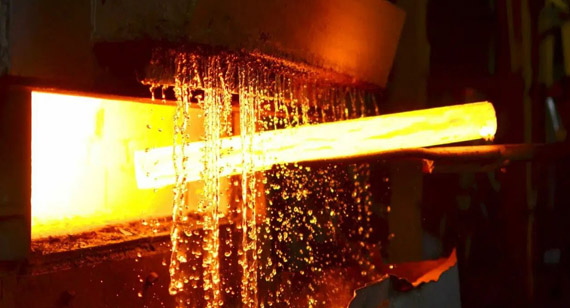
Heat Treatment Capabilities at a Glance
| Property |
17-4 PH Stainless Steel |
304 Stainless Steel |
| Heat Treatable |
Yes – via precipitation hardening | No – non-hardenable via heat treatment |
| Hardening Process |
Precipitation age hardening (e.g., H900–H1150) | Only cold work increases hardness |
| Solution Annealing Temp |
~1040°C (1900°F), followed by cooling | 1010–1120°C (1850–2050°F) with water or air quench |
| Peak Hardness |
Up to 44 HRC (H900 condition) | Approx. 90 HRB (~20 HRC), after cold working |
| Aging Conditions Available |
H900, H1025, H1075, H1100, H1150 | Not applicable |
| Corrosion Resistance Impact |
Maintained after aging | Excellent and stable after annealing |
| Machinability Post-Treatment |
Improves after aging | No heat-related effect |
| Best For |
Aerospace parts, pump shafts, marine hardware | Food equipment, piping systems, medical tools |
Choosing the Right Stainless Steel for Your Needs
VMT: Your Stainless Steel Machining Partner
At VMT, we specialize in CNC machining of heat-treated and annealed stainless steel components. Our team understands how heat treatment affects dimensional stability, strength, and finish — ensuring you receive parts that meet both technical and performance standards.
When selecting between 17-4 PH and 304 stainless steel for CNC machined parts, it’s essential to evaluate not just material performance — but also how cost factors into the total value of your project.
Initial Material Cost
| Aspect |
17-4 PH Stainless Steel |
304 Stainless Steel |
| Raw Material Price |
Higher (due to added elements like copper and niobium) | Lower — one of the most affordable stainless steels |
| Availability |
More specialized — less common than 304 | Readily available worldwide |
| Form Availability |
Bars, rods, forgings, limited sheets | Wide range: sheets, bars, tubes, coils, etc. |
Machining and Processing Costs
| Factor |
17-4 PH Stainless Steel |
304 Stainless Steel |
| Machinability |
Fair – improves after heat treatment | Good – widely used in general machining |
| Tool Wear Rate |
Medium | Lower |
| Heat Treatment Cost |
Required if mechanical strength is critical | None – not heat-treatable |
| Surface Finishing |
Excellent post-machining | Also excellent |
Long-Term Cost Effectiveness
| Factor |
17-4 PH Stainless Steel |
304 Stainless Steel |
| Durability & Strength |
Very high – reduces replacement/repair costs | Moderate – adequate for non-load-bearing uses |
| Corrosion Resistance |
High – especially in chloride environments | Excellent in most general environments |
| Maintenance Requirements |
Low | Low |
| Overall ROI |
High for precision applications | High for volume/general-purpose applications |
Which One Should You Choose?
VMT: Optimizing Material and Machining for Your Budget
At VMT, we don’t just machine parts — we help you optimize your material choice for cost, performance, and turnaround time. Whether you need the strength of 17-4 PH or the reliability of 304, our engineers guide you to the most efficient solution for your application and budget.
When choosing between 17-4 PH and 304 stainless steel, understanding where each material excels is key. Both are widely used in CNC machining, but their mechanical and corrosion-resistance properties make them ideal for different industries and components.
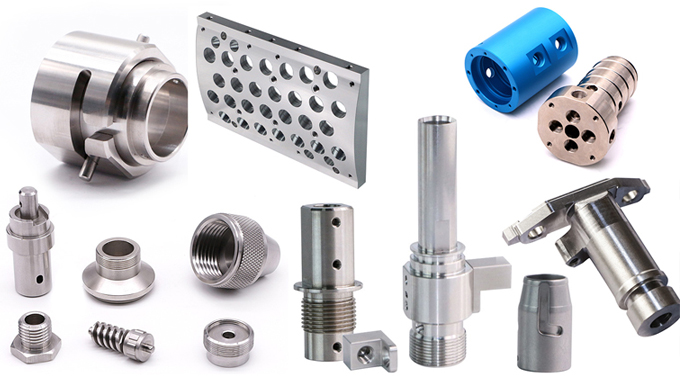
17-4 PH Stainless Steel: High-Strength Performance Applications
17-4 PH (precipitation hardening) stainless steel offers exceptional strength, hardness, and corrosion resistance, making it perfect for demanding structural or load-bearing parts in harsh environments.
| Industry |
Application Scenarios |
Part Examples |
| Aerospace |
Structural and mechanical strength | Jet engine components, actuator shafts, landing gear |
| Oil & Gas |
Corrosive and high-pressure environments | Valve bodies, pump shafts, drilling components |
| Medical |
Sterilizable, corrosion-resistant tools | Orthopedic tools, surgical instruments, implants |
| Marine |
Saltwater exposure, high stress | Propeller shafts, marine fasteners, pump housings |
| Defense |
Ballistic and structural durability | Gun components, aerospace fasteners, brackets |
| Automotive (Motorsport) |
High-performance and fatigue resistance | Turbocharger shafts, drivetrain components |
| Industrial Machinery |
Heavy-duty wear and mechanical stress | Tooling fixtures, press parts, hydraulic system parts |
304 Stainless Steel: Cost-Effective Corrosion Resistance
304 stainless steel is widely used for general-purpose CNC parts that require excellent corrosion resistance, good formability, and aesthetic appeal — but not extreme mechanical strength.
| Industry |
Application Scenarios |
Part Examples |
| Food & Beverage |
Hygiene and corrosion-resistance | Food processing components, mixers, tanks, piping |
| Medical |
Non-load bearing instruments | Trays, surgical tool handles, hospital equipment |
| Architecture |
Decorative and structural elements | Handrails, door handles, facade panels |
| Consumer Goods |
Durable and aesthetic products | Watch casings, kitchen appliances, hardware fittings |
| Automotive |
Non-critical structural parts | Exhaust systems, trim parts, brackets |
| Chemical Processing |
Mild chemical resistance | Storage tanks, tubing, fittings |
| Water Treatment |
Rust prevention in wet environments | Water filters, housings, valve components |
Choosing the Right Stainless Steel for Your CNC Machined Parts
Choose 17-4 PH when:
Choose 304 when:
VMT: Precision Machining for Both 17-4 PH and 304 Stainless Steel
At VMT, we specialize in CNC machining both high-performance alloys and general-purpose stainless steels. Whether you're developing a critical aerospace bracket from 17-4 PH or a food-safe fitting from 304, we deliver:
Request a free project evaluation today and let our engineers help you choose the right stainless steel for your application.
1. 17-4 PH Stainless Steel (Precipitation-Hardened Stainless Steel)
| Country/Region |
Standard Number/Name |
Equivalent Grade |
Notes |
| USA | ASTM A564 / A693 | 17-4 PH / UNS S17400 | Commonly used in aerospace, energy, and high-strength parts |
| Germany | DIN EN 10088-1 | X5CrNiCuNb16-4 | German equivalent designation for 17-4 PH |
| China | GB/T 20878 | 0Cr17Ni4Cu4Nb | Chinese national standard designation |
| Japan | JIS G4303 | SUS630 | JIS standard designation for 17-4 PH |
| European Union (EU) | EN 10088 | 1. | W.Nr. number commonly used in EU and international markets |
| United Kingdom (UK) | BS EN 10088 | 17/4 PH | Usually same as US 17-4 PH, compatible with British standards |
| International | UNS Number | S17400 | Universal identification code for |
2. 304 Stainless Steel (Austenitic Stainless Steel)
| Country/Region |
Standard Number/Name |
Equivalent Grade |
Notes |
| USA | ASTM A240 / A276 / A312 | 304 / UNS S30400 | Most commonly used general-purpose stainless steel in the US |
| Germany | DIN EN 10088-1 | X5CrNi18-10 | Indicates 18% chromium, 10% nickel austenitic stainless steel |
| China | GB/T 20878 | 0Cr18Ni9 / 06Cr19Ni10 | Chinese equivalent standard |
| Japan | JIS G4303 | SUS304 | Common stainless steel grade for Japanese industries |
| European Union (EU) | EN 10088 | 1.4301 | Common EU grade used in food, construction, chemical industries |
| United Kingdom (UK) | BS EN 10088 | 304 | Same as US grade, compatible with EU standards |
| International | UNS Number | S30400 | Used in international certification and material traceability |
Tips: How to Choose the Right Standard and Material?
VMT: Your Partner for CNC Machining with Full International Standard Stainless Steel
We specialize not only in machining 17-4 PH and 304 stainless steel but also ensure all materials come with Manufacturer’s Test Certificates (MTC) and international equivalent certifications, meeting the requirements of medical, aerospace, and food industries.
Contact us now for stainless steel material selection advice and machining quotations!
Selecting the right stainless steel grade is critical for ensuring your parts perform reliably while optimizing costs and manufacturing efficiency. 17-4 PH stainless steel and 304 stainless steel are two of the most commonly used grades in CNC machining and manufacturing. However, their properties and best-fit applications differ significantly. This guide helps you decide when to use each material based on your project requirements.
When Should I Use 17-4 PH Stainless Steel?
Choose 17-4 PH stainless steel when your application demands:
When Should I Use 304 Stainless Steel?
Choose 304 stainless steel when your priorities include:
Summary Table: Quick Selection Guide
| Criteria |
17-4 PH Stainless Steel |
304 Stainless Steel |
| Mechanical Strength | High (customizable with heat treatment) | Moderate |
| Corrosion Resistance | Good (especially in chloride environments) | Excellent |
| Magnetic Properties | Magnetic | Non-magnetic |
| Machinability | Moderate; improves post-heat treatment | Good |
| Weldability | Requires care; may need post-weld aging | Excellent |
| Cost | Higher | Lower |
| Typical Applications | Aerospace, marine, tooling, pumps | Food, medical, architectural, general use |
Choosing the right stainless steel grade not only impacts the performance and longevity of your parts but also influences manufacturing cost and timelines. At VMT, we provide expert guidance to help you select the ideal material and machining process for your project.
Choosing the right stainless steel for knives is crucial to balance sharpness, durability, corrosion resistance, and ease of maintenance. Among the many stainless steel grades, 17-4 PH and 304 are often considered for knife manufacturing. Understanding their strengths and limitations will help you select the best material for your knife projects, whether for professional use, outdoor activities, or kitchen tools.
Is 17/4 PH Stainless Steel Good for Knives?
Yes, 17-4 PH stainless steel can be a good choice for knives under specific conditions:
Is 304 Stainless Steel Good for Knives?
304 stainless steel is generally less suitable for high-performance knives, but it has some niche uses:
Summary Table: Knife Material Suitability
| Criteria |
17-4 PH Stainless Steel |
304 Stainless Steel |
| Edge Retention | High | Low |
| Hardness (HRC) | Up to ~44 | ~20 |
| Corrosion Resistance | Good | Excellent |
| Sharpening Ease | Moderate (harder to sharpen) | Easy |
| Typical Knife Types | Tactical, outdoor, heavy-duty knives | Kitchen knives, decorative blades |
| Maintenance | Requires careful maintenance | Low maintenance |
Conclusion
At VMT, we provide expert CNC machining and finishing services tailored for both steel types, ensuring your knife parts meet precise standards of quality and performance.
At VMT, we specialize in delivering high-precision CNC machining services tailored specifically for stainless steel components. With years of industry experience and advanced manufacturing capabilities, we serve clients across aerospace, medical, automotive, food processing, and other demanding sectors.
Why Choose VMT for Stainless Steel CNC Machining?
We machine a wide range of stainless steels including 17-4 PH, 304, 316, 440C, and more. Whether your project requires high-strength, corrosion-resistant, or heat-treated parts, our experts guide you in selecting the optimal grade.
Our factory is equipped with 3-axis, 4-axis, and 5-axis CNC milling machines, CNC turning centers, Swiss-type lathes, and advanced finishing lines to ensure precision, consistency, and efficiency.
VMT adheres to strict quality control processes including material traceability, in-process inspections, and final testing to meet ISO, ASTM, and customer-specific standards.
From rapid prototyping and small batch runs to large-scale production, we accommodate your schedule and volume needs without compromising quality.
Leveraging optimized workflows and strong supplier partnerships, we provide cost-effective solutions with reliable turnaround times.
Typical Stainless Steel CNC Machined Parts We Produce
Partner with VMT for Your Stainless Steel CNC Machining Needs
Our commitment is to deliver parts that meet your exact specifications, from prototype to production. With advanced capabilities, expert guidance, and a customer-first approach, VMT is your trusted manufacturing partner.
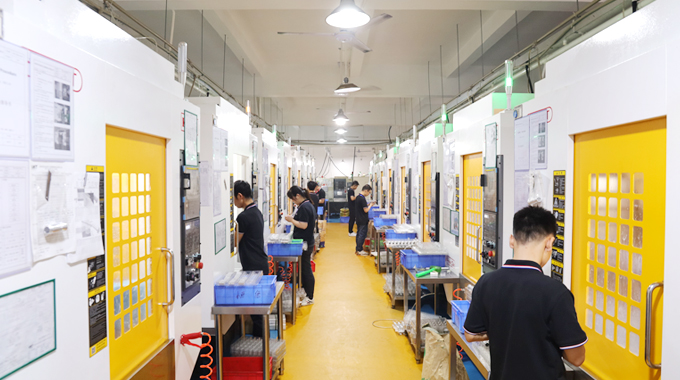
Choosing the right stainless steel grade—whether the high-strength, precipitation-hardened 17-4 PH or the versatile, corrosion-resistant 304 stainless steel—is vital to the success of your CNC machined components. Each material offers distinct advantages tailored to specific application needs, from aerospace and medical devices to food processing and architectural projects.
At VMT, we combine deep material expertise with advanced CNC machining technology to deliver precision parts that meet your exact requirements. Our commitment to quality, flexible production capacity, and competitive pricing ensures that your project is completed efficiently and reliably.
Whether you need the mechanical strength and heat-treatability of 17-4 PH or the exceptional corrosion resistance and formability of 304 stainless steel, VMT is your trusted partner for stainless steel CNC machining services.
1. What Grade of Stainless Steel is 304 Equivalent to?
304 stainless steel is equivalent to AISI 304, UNS S30400, EN 1.4301, JIS SUS304, and GB 0Cr18Ni9 in various national standards.
2. Is 304 Stainless Steel Better Than 16 Stainless Steel?
304 stainless steel generally has higher corrosion resistance and nickel content compared to 16 gauge stainless steel, which is a thickness designation rather than a grade.
3. What is the Difference Between 17-4 Stainless Steel and 304 Stainless Steel?
17-4 PH is a precipitation-hardened stainless steel offering higher strength and hardness, while 304 is an austenitic stainless steel known for corrosion resistance and good formability but lower strength.
4. What is Another Name for 304 Stainless Steel?
Common names include AISI 304, SUS304, 18-8 stainless steel, or simply 18/8, referring to its approximate chromium and nickel content.
5. What is the Cheapest Grade of Stainless Steel?
Generally, 304 stainless steel is among the more affordable corrosion-resistant grades. Lower-cost alternatives include 430 stainless steel, which is ferritic and less corrosion resistant.
6. How Do I Tell if My Stainless Steel is 304 or 316?
304 and 316 look similar but 316 contains molybdenum, improving corrosion resistance. Testing methods include chemical analysis, magnetic response tests, or certifications from suppliers.
7. Will 304 Grade Stainless Steel Rust?
304 stainless steel is highly corrosion-resistant but can rust under harsh environments or if protective oxide layers are damaged.
8. Which Grade of Stainless Steel is the Best?
There is no single “best” grade; the choice depends on application needs—304 for general corrosion resistance, 316 for marine/chemical environments, and 17-4 PH for high strength.
9. Which is More Expensive, 304 or 316?
316 stainless steel is more expensive due to its added molybdenum content and enhanced corrosion resistance.
10. How Long Does 304 Stainless Steel Last?
With proper maintenance, 304 stainless steel can last decades in most environments.
11. Which is More Durable, 304 or 316?
316 is generally more durable in corrosive and marine environments due to molybdenum, while 304 is suitable for most indoor applications.
12. What are the Alternatives to 304 Stainless Steel?
Alternatives include 316 stainless steel, 430 stainless steel, duplex stainless steels, and nickel alloys depending on corrosion and strength requirements.
13. What is the Difference Between 18-10 Stainless Steel and 304 Stainless Steel?
18-10 stainless steel is a type of 304 stainless steel containing approximately 18% chromium and 10% nickel.
14. Which is Better, 304 Stainless Steel or 18/8 Stainless Steel?
Both terms often refer to the same grade (304) with slightly varying nickel content; performance differences are minimal.
15. What is the Best Stainless Steel for Making Cutlery?
304 stainless steel is widely used for cutlery due to its corrosion resistance and ease of maintenance, though higher-end knives use specialized steels.
16. Which is the Better Grade of Stainless Steel, 304 or 316?
316 offers better corrosion resistance in harsh environments, while 304 is sufficient for general use and more cost-effective.
17. Is 304 Grade Stainless Steel the Same as 18-10?
Yes, 18-10 stainless steel is a common designation for 304 stainless steel with 18% chromium and 10% nickel.
18. Which is More Expensive, 304 or 316?
As above, 316 stainless steel is more expensive due to its superior corrosion resistance.
